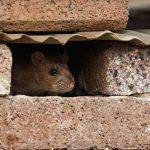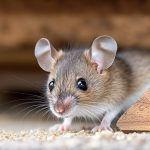Mice Nest 101: Where, How to Find Tips – A Comprehensive Guide
Mice enter your home to find food and water or to escape the cold weather. When they move into your house, they begin to settle in and build their nests.
So, where and how do you find mice nests in your home? Mice are clever in their nesting preferences, preferring attics, basements, wall voids, and crawl spaces as safe havens. Look for scratching noises within the walls, droppings in hidden corners, and a faint musky scent lingering in hidden spaces to find the mice nests.
This post is for you if you want to know how to find mice nests, where to look for them, and what to do once you find them. We will also go over how to keep mice out of your home and how to get rid of them permanently.
How Do Mice Nests Look Like?
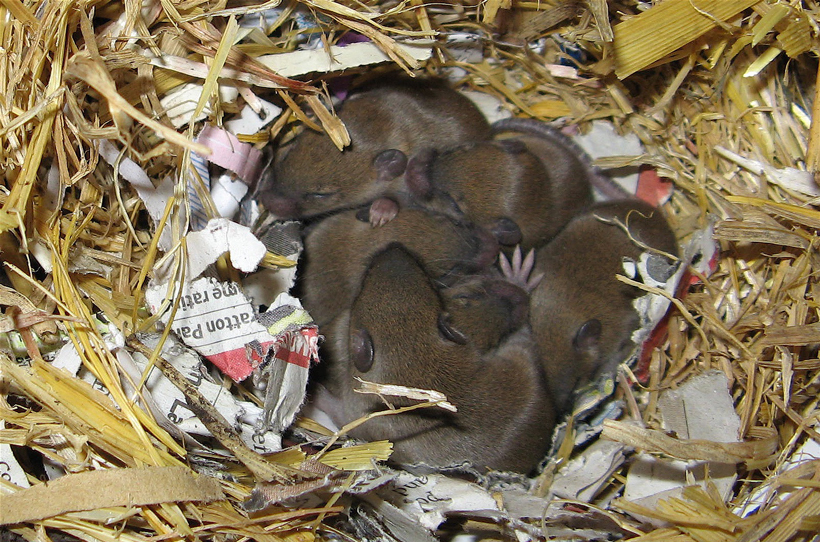
In cluttered spaces, you may find it challenging to differentiate a mouse’s nest from ordinary debris. However, there are several key characteristics of a mouse nest. They include:
Structure and Shape:
Mice nests have a well-defined and compact structure. They often resemble small, spherical balls with an entrance point, providing a cozy and secure shelter for the inhabitants.
Unlike random debris, which may appear haphazardly scattered, mice nests have a more organized and deliberate arrangement of materials.
Materials Used:
Pay close attention to the materials used in the construction of the nest. The presence of shredded paper, bits of cloth, or chewed insulation is a strong indicator of a mouse nest.
Location:
Mice prefer concealed and secluded spots for their nests. Therefore, look for nests tucked away in hidden corners, crevices, or behind furniture.
Activity Traces:
An active nest will show signs of life. Look for fresh droppings or evidence of gnawing near the nest site. The presence of these signs indicates that the nest is currently occupied and actively used by mice.
Where And How Do I Find Mice Nests?
Now that you know what mice nests look like. Let’s look at the most common places mice nests are found in our homes and how to find them.
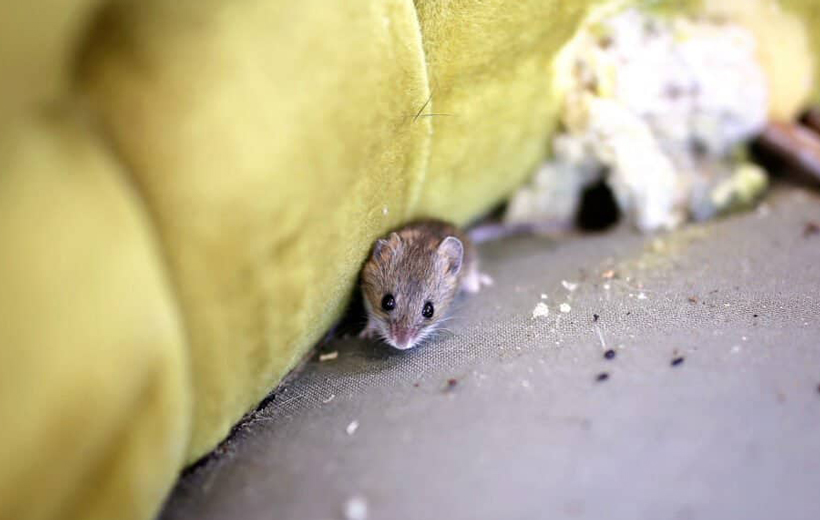
1. Attics and Basements:
As mentioned, mice prefer undisturbed areas with little human activity, making attics and basements ideal nesting locations. Look for signs of nesting materials in corners, crevices, and tucked-away spaces in these areas.
2. Wall Voids:
The space between walls is an excellent hiding place for mice’s nests. If you hear scratching sounds within walls or detect a faint odor, this could indicate the presence of a hidden nest.
3. Under Appliances:
Mice may build nests beneath appliances such as refrigerators, stoves, or washing machines because these areas provide warmth and protection.
4. Storage Boxes and Cluttered Areas:
Cardboard boxes, especially those left undisturbed for a long time, can be inviting nesting spots for mice. Cluttered areas in garages, closets, and storage rooms also offer concealed spaces for nests.
5. Insulation:
Mice also build nests within insulation material. This makes detection a bit challenging. Look for signs of disturbed or shredded insulation in areas like attics and crawl spaces. Also, if the attic has a musty smell of ammonia, it may indicate a mice infestation. The ammonia smell is due to mice excretion.
6. Outdoor Areas:
Besides indoor nesting, mice may construct outdoor nests in protected areas around your home. Check for nests in shrubs, bushes, woodpiles, and other secluded spots.
7. Behind Furniture:
Mice may build nests behind or beneath furniture, especially if it is rarely moved or cleaned.
Tips For Detecting Hidden Nests
- Thermal imaging cameras: These cameras detect temperature variations. This allows you to identify potential nesting areas where mice generate heat. These cameras can reveal hidden spots where mice may have built their nests, even behind walls or in ceiling voids.
- Motion-activated cameras: Strategically place these cameras in areas suspected of harboring mice nests. These cameras will capture images or videos of any movement, providing concrete evidence of the mice’s presence.
- Look for Fresh Nesting Materials: Mice continuously collect materials to build and maintain their nests. Keep an eye out for freshly gnawed items, such as paper, cloth, or insulation.
- Follow Their Trails: Mice will create well-worn pathways through your home as they move between their nests and food sources. You can follow these paths to identify potential nesting areas nearby.
- Observe Nighttime Activity: Mice tend to be most active during the night. Consider staying up late and quietly observing areas where you suspect nesting activity. You might catch glimpses of mice moving to and from their nests.
- Use Bait Stations: Set up bait stations with enticing food to lure mice out of their nests. Once they take the bait, they may lead you back to their nesting sites.
Here is a video to help you out visually.
What Do I Do After Finding a Mice Nest?
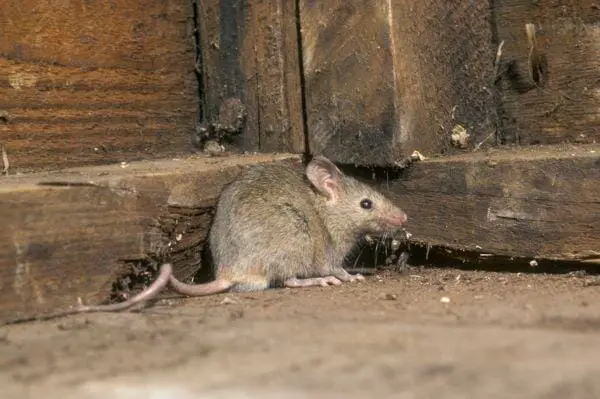
If you discover a mouse nest in your home, you must act quickly to address the problem. Here are the steps to follow:
1. Wear protective gear:
Put on protective gear before handling the mice’s nest to protect yourself from potential health hazards. Wear disposable gloves and a mask to avoid direct contact with the nesting materials, which may contain harmful particles and allergens.
2. Avoid scattering the nest:
Refrain from scattering the nest or disturbing the materials, as this can attract more mice or spread potential pathogens. Keep the nesting materials intact to aid in proper disposal.
3. Carefully remove the nest:
Using a plastic bag or disposable container, gently scoop up the nest and surrounding materials. Seal the bag tightly or cover the container securely to prevent any contamination during disposal.
4. Sanitize the area:
After removing the nest, thoroughly clean and sanitize the area where the nest was found. Use a disinfectant to eliminate any lingering odors and potential health hazards associated with mouse droppings or urine.
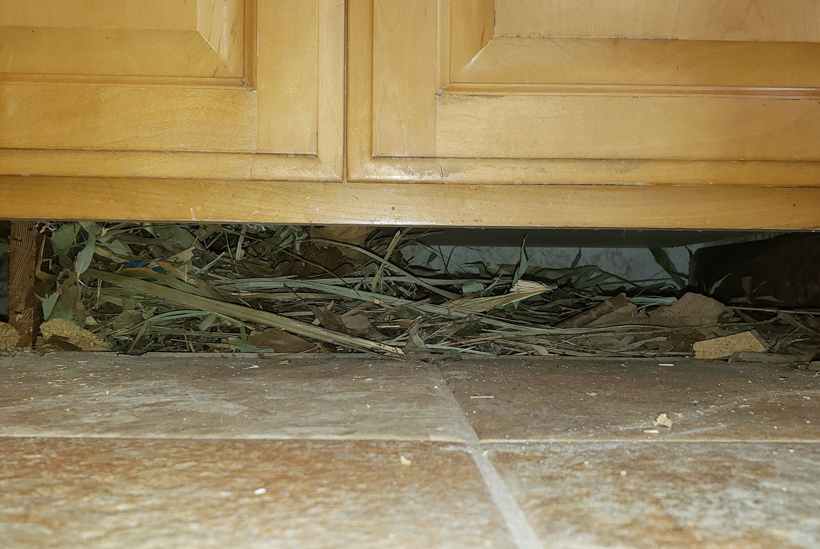
5. Set traps:
After removing the nests, it’s time to get rid of the remaining mice in your house. Consider setting up humane mouse traps in strategic locations. These traps can help capture the remaining mice and prevent them from nesting further.
6. Practice preventive measures:
After dealing with the mice and mice’s nest, take preventive measures to keep the mice from returning. To make your home less appealing to mice, store food in airtight containers to clean up spills and crumbs immediately. Also, keep your home clutter-free and maintain proper sanitation.
7. Identify entry points:
Determine how mice got into your home in the first place. Look for any gaps, cracks, or openings around doors, windows, utility lines, and pipes. Identifying entry points will assist you in preventing mice from returning.
8. Seal entry points:
Once you’ve identified entry points, take measures to seal them off. Use caulk, steel wool, or expanding foam to block any holes or gaps that mice could use to enter your home.
9. Seek professional help:
If the infestation is severe or you’re unsure how to handle the situation, consider hiring a professional pest control service. Pest control professionals can assess the situation, provide effective treatment, and provide advice on how to avoid future infestations.
Understanding where mice nest and the types of environments they prefer is a crucial step towards addressing a rodent problem. However, knowing how they enter your home in the first place is equally vital. To prevent any future infestations and safeguard your home, it’s essential to identify and seal off any potential entry points. Learn more about where to look and the signs to watch out for in our comprehensive guide on how to find mice entry points. If you’ve already identified an ongoing issue with these pesky invaders, you’ll likely want swift and effective solutions. Dive into our thorough article on how to get rid of mice to take back control of your home.FAQs
Here are additional questions you would want to know the answers to.
Q1. How many mice live in a nest?
Every liter, a female mouse can give birth to several litters of 4 to 8 pups, resulting in a gradual increase in the number of mice in the nest. Multiple female mice may share a nest in some cases, particularly in areas with plenty of food and shelter.
Q2. Are there any natural ways I can implement to keep mice away?
Yes, there are several natural methods to deter mice from entering your home. Peppermint oil emits a scent that mice find unpleasant. Additionally, you can use natural deterrents like cloves, mothballs, or cayenne pepper to discourage mice from nesting in your home.
Q3. Are there any specific times of the year when mice are more likely to build nests in homes?
Mice breed all through the year. Therefore, they can build nests at any time of the year and may seek shelter in homes throughout the year. However, their nesting activity tends to increase during the colder months as they look for warmer places to build their nests and access a steady food supply.
Conclusion
By understanding how and where to find mice nests, we can deal with mice more effectively. In the event that you find a mouse nest, follow proper procedures to handle it safely and eliminate any potential health risks.
Moreover, ensure you implement preventive measures, such as sealing entry points and maintaining cleanliness. This ensures a fortified defense against future mice infestations.
With this comprehensive knowledge and practical tips, you are now equipped to become a skilled mouse detective. You can successfully identify, eliminate, and prevent mice nests from encroaching on your living space.



